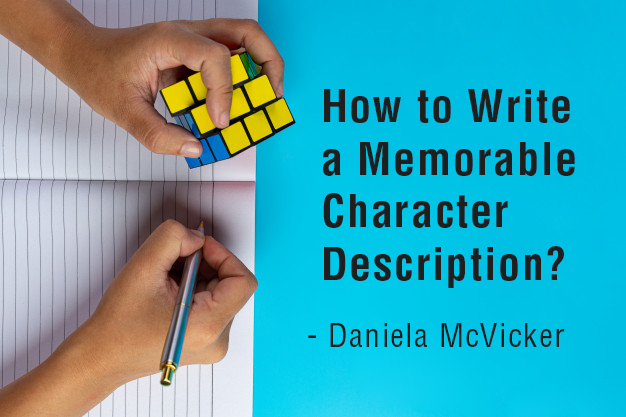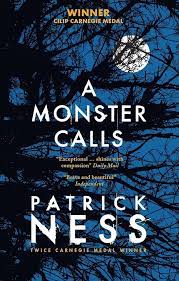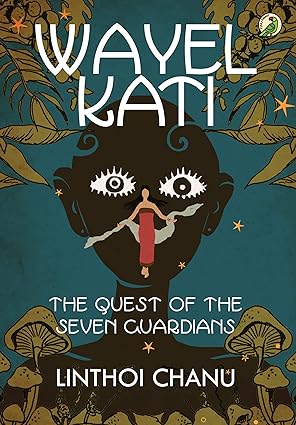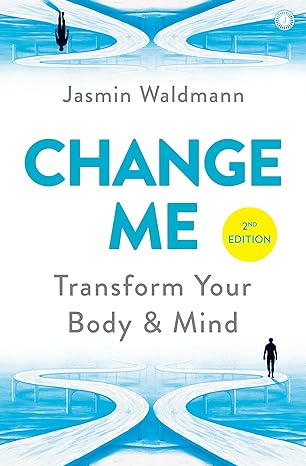Books To Look Out For This Summer!
Bring out your sunglasses and a reading mat, we are going to read this summer. Or perhaps turn your AC on full blast if you

When you’re writing a story, a novel, or any piece of a literary text, you want your audience to be drawn into it. You need their full attention and all of their senses activated to be able to become a part of your story. Naturally, you want the readers to understand your characters and become connected to them in a specific way. This is only possible if you write a memorable character description.
The description of a character needs to give the readers a chance to get to know, develop a connection with and understand the person you’re describing. If you manage to nail this, you’ll have their attention to the very last line. But, if you’re confused about writing a great character description, just keep reading.
Here’s what to bear in mind when writing a killer character description your readers won’t forget.
When you’re writing about an important character, you need to make the readers feel like they’re standing right in front of them, looking them in the eyes.
This is only possible if you use your descriptions to activate all of the readers’ senses.
This means that there need to be some details in the description which will make the readers see, feel, smell, and hear your character.
For example:
– “But he had a voice as soft as wild honey dripping from a tree, and a skin softer than down. “ (Bagheera, Rudyard Kipling, The Jungle Books)
– “Her chest had dropped, so 5 that she stooped; and her voice had dropped so that she spoke low, and with a dead lull upon her.” (Miss Havisham, Charles Dickens, Great Expectations)
Find a way to make your readers present in the same room with your character. This will truly help you create a memorable character.
If you describe your characters using solely adjectives and straight-forward comparisons, your readers might get bored and stop paying attention.
This is why you need to use more for your descriptions.
When describing your character, you can compare them to something your readers wouldn’t expect, and build on from there. Consider these examples:
– “There wasn’t no color in his face, where his face showed; it was white; not like another man’s white, but a white to make a body sick, a white to make a body’s flesh crawl – a tree-toad white, a fish-belly white.” (Pap Finn, Mark Twain, The Adventures of Huckleberry Finn)
– “His heart was like a sensitive plant, that opens for a moment in the sunshine, but curls up and shrinks into itself at the slightest touch of the finger or the lightest breath of wind.” (Mr. Lawrence, Anne Bronte, The Tenant of Wildfell Hall)
Use comparisons to make a more vivid, unique, and intriguing character description and ensure your readers have the details they need to form an image in their mind.
The face tells us a lot about a person. And, while there are some details you can omit from the entire character description, and leave it to the imagination of the readers, you should make use of describing the face of your character.
This will immensely improve your character description, and give depth to your character that your readers will be able to connect to.
Make sure you use peculiar details and uncommon facial descriptions, such as the ones that follow:
– “He had a long chin and big rather prominent teeth, just covered, when he was not talking, by his full, floridly curved lips.” (The Director, Aldous Huxley, Brave New World)
– Her face was not young, but it was simple; it was not fresh, but it was mild. She had large eyes that were not bright. (Miss Tina, Henry James, The Aspern Papers)
The details in the face of the character can say so much about him. Use as many unique details and interesting imagery to bring the character to life in front of your readers.
What your character is wearing and how that clothing fits them can reveal more details about their personality, habits, their past, and their secrets.
You can use clothes to describe not only what the character is currently wearing, but they are like in their essence.
This is why you need to be wise about writing it and make the most of it:
– “Though every vestige of her dress was burnt, as they told me, she still had something of her old ghastly bridal appearance.” (Miss Havisham, Charles Dickens, Great Expectations)
– “As for his clothes – just rags, that was all.” (Pap Finn, Mark Twain, The Adventures of Huckleberry Finn)
Clothes will bring to life the hidden details of your character’s personality and make the image even more clear.
It will be of great use for your readers to have something specific and easy to imagine to hold on to.
Character description is an important piece of your storyline and the hook that will get your readers interested and engaged. If you succeed in writing a memorable character description, your entire story will become deeper, and worth admiring.
Use the guide above to describe all your future, unforgettable characters. If you need help with editing or proofreading, take a look at these writing companies that might help. Now go ahead and start working on those new memorable characters your readers are waiting for.
Daniela is a contributor to Top Writers Review
Bring out your sunglasses and a reading mat, we are going to read this summer. Or perhaps turn your AC on full blast if you

Once in a while you come across a book that has the power to pierce through your heart. A Monster Calls is one such book. Written by Patrick Ness, it is a story about a young boy with an ailing mother at home. It covers a range of somewhat difficult topics ranging from death to guilt.

How did you start writing ? I am not sure if I know exactly when I started writing. I’ve always loved to tell stories, and

Well the hard part is over, you finished writing the book , now you have some kind of a contract and the book will be

From the heart and hills of Manipur, the story revolves around seven guardians ‘chosen’ to retrieve the scissor of justice, the Wayel Kati. None of

The author narrates the story of Amit, a middle aged working professional, who faces the same struggles that so many of us in the corporate

You must be logged in to post a comment.


Get all latest news, exclusive deals and Books updates.